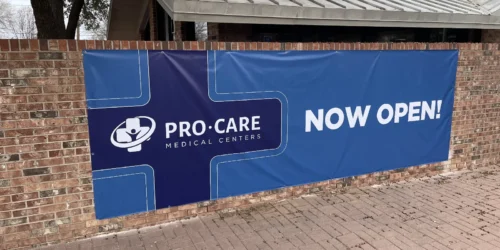As the number of people out on the road grows along with our population, so does the number of car accidents. 25 million car accident injuries were recorded in 2019, and the risk of driving has only increased since then. In fact, the United States is currently dealing with its steepest increase in deaths related to car accidents since data was first collected starting in the 1940s. Many of those deaths result from severe, critical injuries that sometimes end in fatality.
Mild Traumatic Brain Injuries
The most common fatal injury in car accidents involves physical trauma to the head or brain. According to the Center for Disease Control (CDC), over 170 Americans die of a traumatic brain injury daily, adding up to about 64,000 yearly.
Traumatic brain injuries are caused by severe blows to the head or penetration in the area of the head (such as in the case of a gunshot). These injuries mainly affect the skull and brain. They can range in severity from mild to severe and can cause both death and/or significant lifelong disability.
Concussions are the form of traumatic brain injury that occur most frequently during car accidents, affecting around 1 in 60 people involved in a collision. They can happen even with relatively minor impacts and can also occur as a result of impact elsewhere in the body if the impact causes your brain to accelerate within the skull. While concussions are not usually fatal, there are related complications that can cause death, such as in the case of secondary impact syndrome, which occurs when you get a second concussion while healing from the first. That said, undergoing head injury treatment is a must even after mild traumatic brain injuries.
Moderate Traumatic Brain Injuries
In the case of traumatic brain injuries, “moderate” is defined as an injury to the head or brain that requires ongoing medical support. While not always fatal, concussions and other traumatic brain injuries at this level can make a lifelong impact. They can cause disability as well as the burden of extremely high medical debt, with a lifetime cost in the billions.
Severe Traumatic Brain Injuries
A study examining outcomes after five years within the initial incident causing traumatic brain injuries showed that for severe injuries, 22% of patients died, while the injury got worse for 30% of patients. Oftentimes, severe traumatic brain injuries lead to periods of impaired unconsciousness that significantly affect your day-to-day life. This can take the form of complete unconsciousness, such as a coma, or you may experience some amnesia (memory loss). You may even end up in a vegetative state, where you are not unconscious but have little control over your body.
Spinal Cord Trauma
Just as your brain is vital to your functioning, so is your spinal cord. Unfortunately, your spinal cord is also extremely vulnerable to injury in the event of a car accident. Most injuries to the spinal cord occur during traffic-related accidents. About 12,400 people experience spinal cord injuries each year.
Because the spinal cord is the messaging system between your brain and the rest of your body, damage to it can have serious effects on your bodily function. This can result in lifelong disability. Some people develop paralysis due to trauma to the spinal cord, while others struggle to breathe, lose bone density and muscle mass, and develop problems with their circulatory system. Sometimes, trauma to the spinal cord can result in death.
Injuries to Internal Organs
Your internal organs, such as your heart, liver, and lungs, are necessary for the continued proper functioning of your body. Damage to your internal organs could cause your body to go into distress and can cause severe illness, disability, and death.
One sign of injury to internal organs is internal bleeding. Unfortunately, this can be hard to detect, depending on where the injury occurred. Such bleeding can result in a traumatic brain injury like those described above, or it can result in other organ failures.
Broken Ribs
Your most important internal organs, other than your brain, are protected by your rib cage. A break to one of your ribs has the potential to puncture one of these vital organs. This is especially a danger to your lungs. Over half of people aged 55 or older who experience a broken rib die as a result.
Other Chest Injuries
Of course, any major physical trauma to your chest has the potential to affect your vulnerable heart and lungs. Injuries to these organs can cause your body to fail, as you require the function of your heart and lungs to survive. You should be especially concerned about these injuries if you experienced any sort of blow to the chest during a car accident.
Post-Traumatic Stress Disorders
Physical injuries aside, know that you can get PTSD from a car accident. While mood disorders and mental illness do not always seem as urgent as, say, a coma, the truth is that such disorders make you vulnerable to depression, which certainly can end in death if not treated. It is important to provide yourself with self-care after an accident and take time to recover mentally as well as physically. If you have been in a car accident before, you are much more likely to develop post-traumatic stress disorder as a result of another accident. This increases according to the severity of the accident in which you were involved.
Risk Factors for Critical Car Accident Injuries
There are certain factors that put you more at risk for involvement in a major car accident or at risk for injury from a car accident of any extent of severity.
- Gender: Some research suggests that women are 73% more likely to experience a car accident when compared to men.
- Behaviors: Participating in risky behaviors like speeding or paying attention to a cell phone while driving can put you at a much greater risk of being involved in a car accident. Riding in a car without a seatbelt is twice as risky as wearing one.
- Previous injuries: Any time you injure your body, you are more likely to injure that part of your body again, even if you have already healed. This can mean breaking the same bone more than once, or it can mean succumbing to an injury, such as in the case of second impact syndrome.



